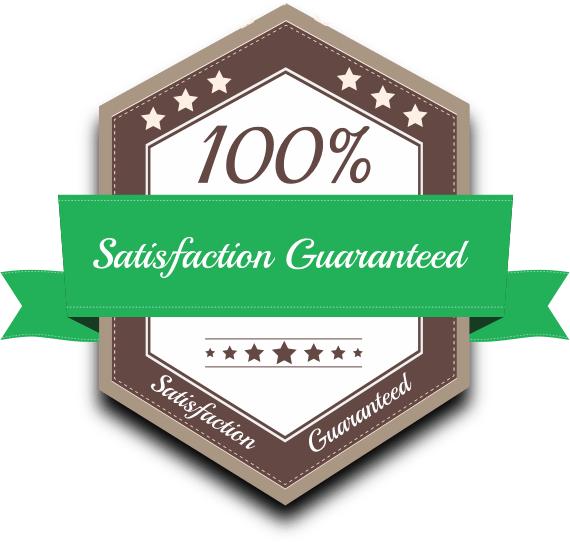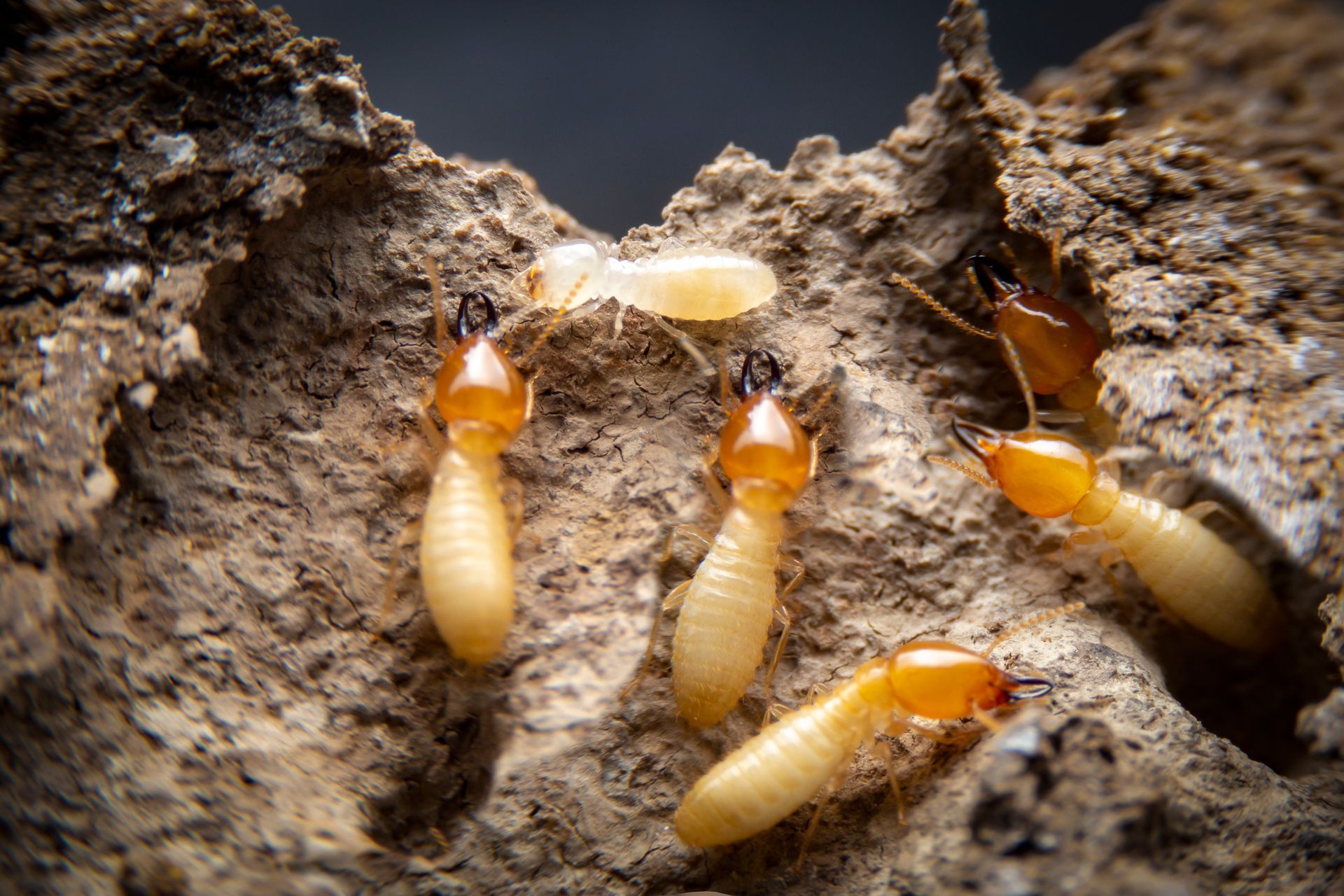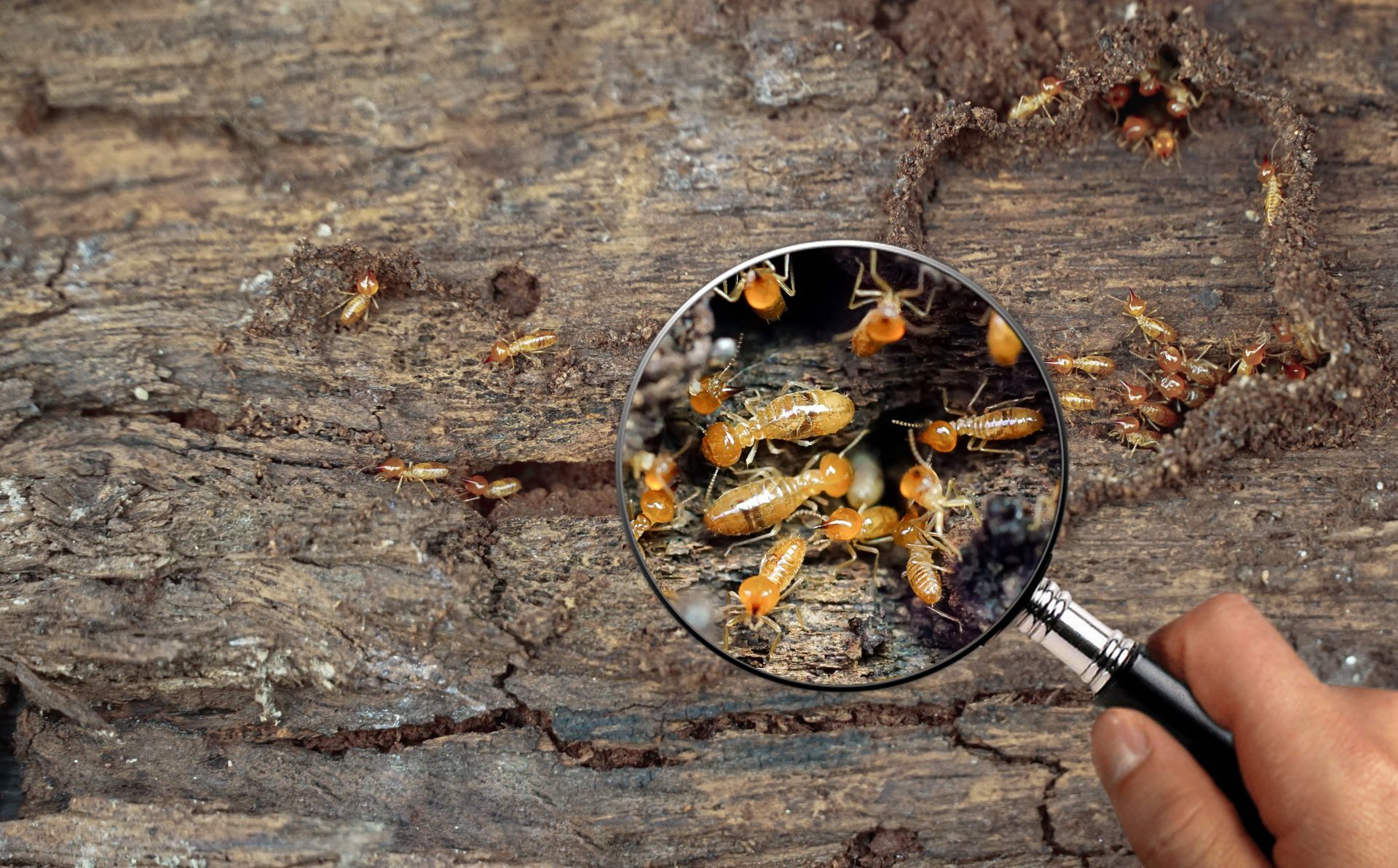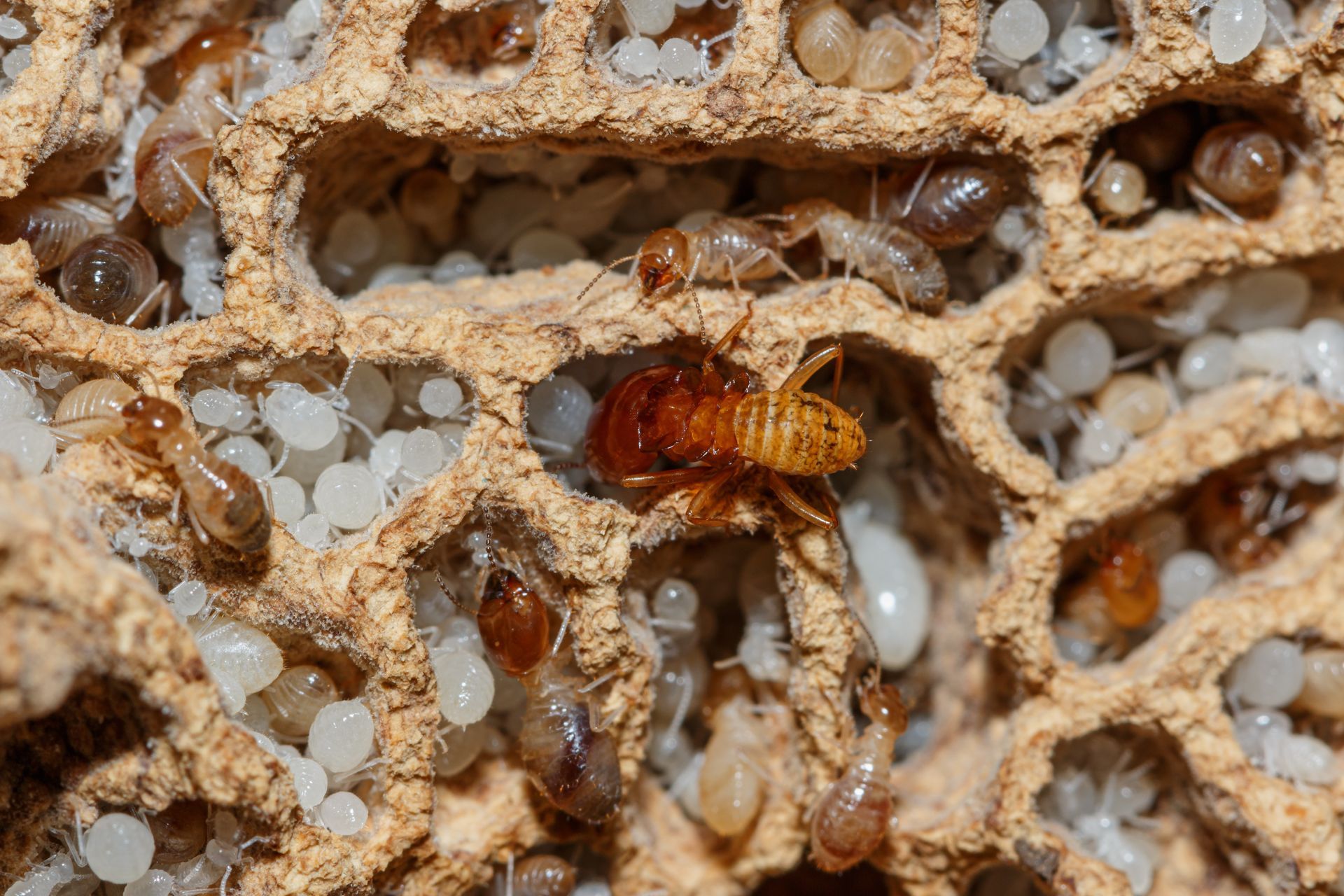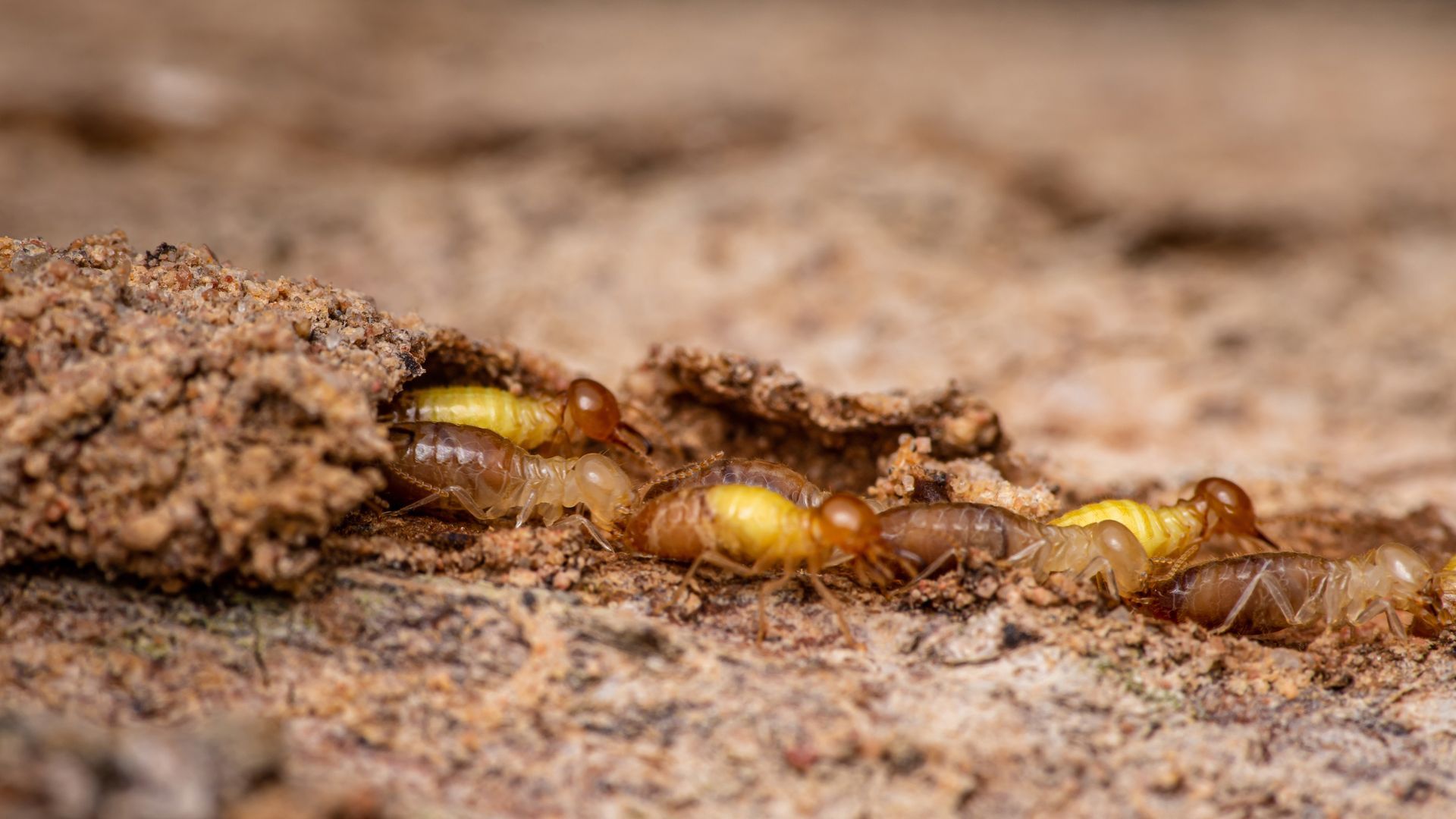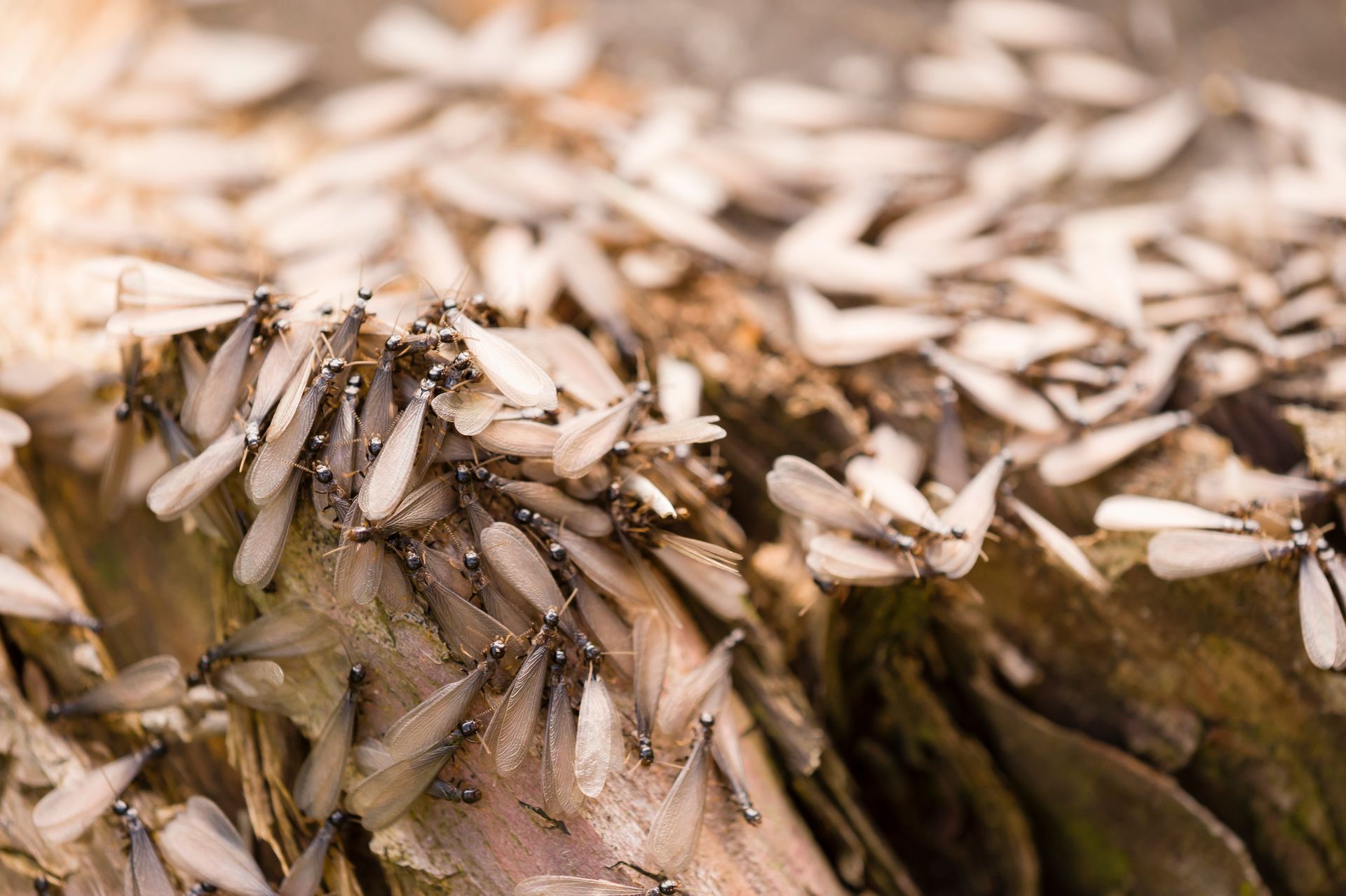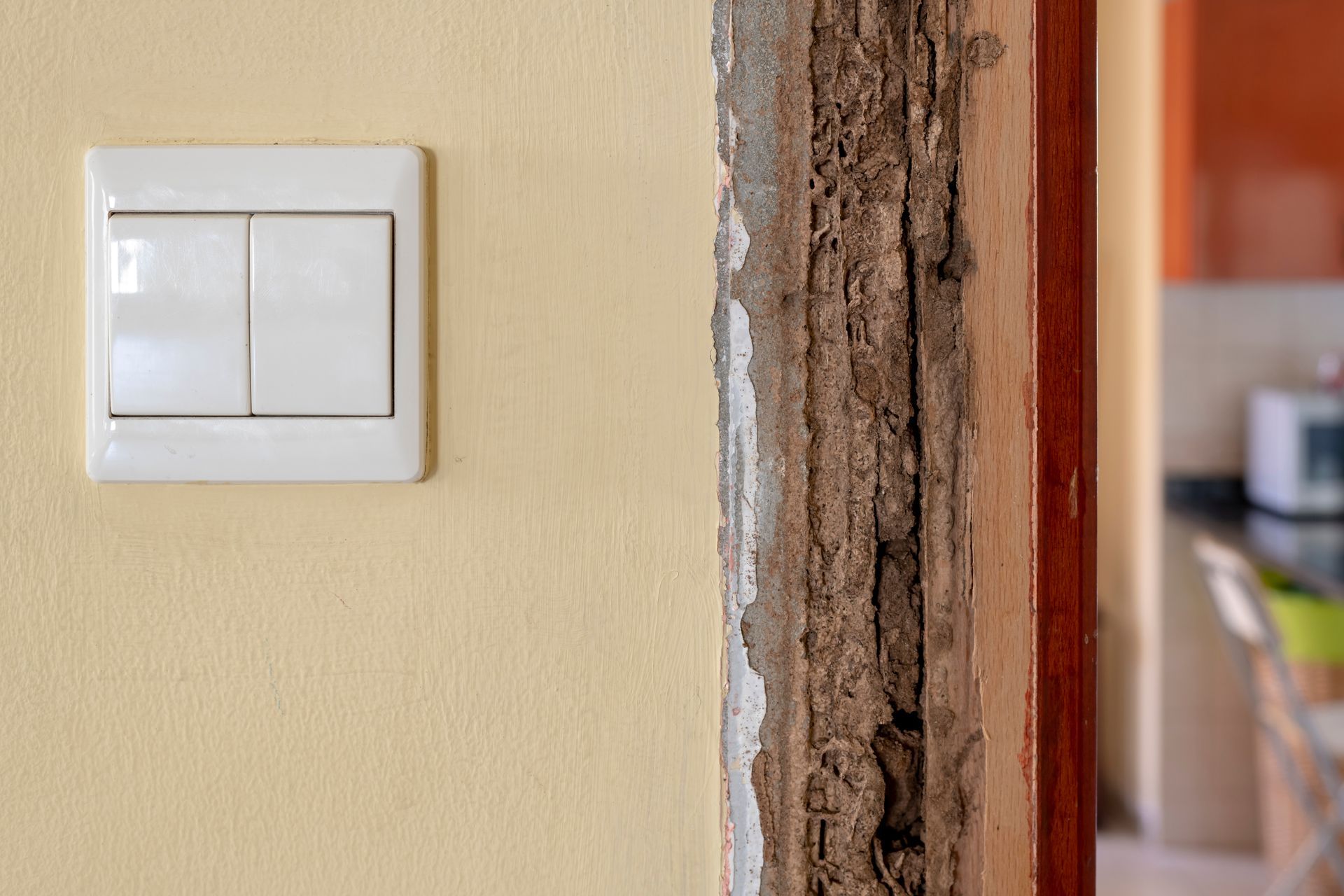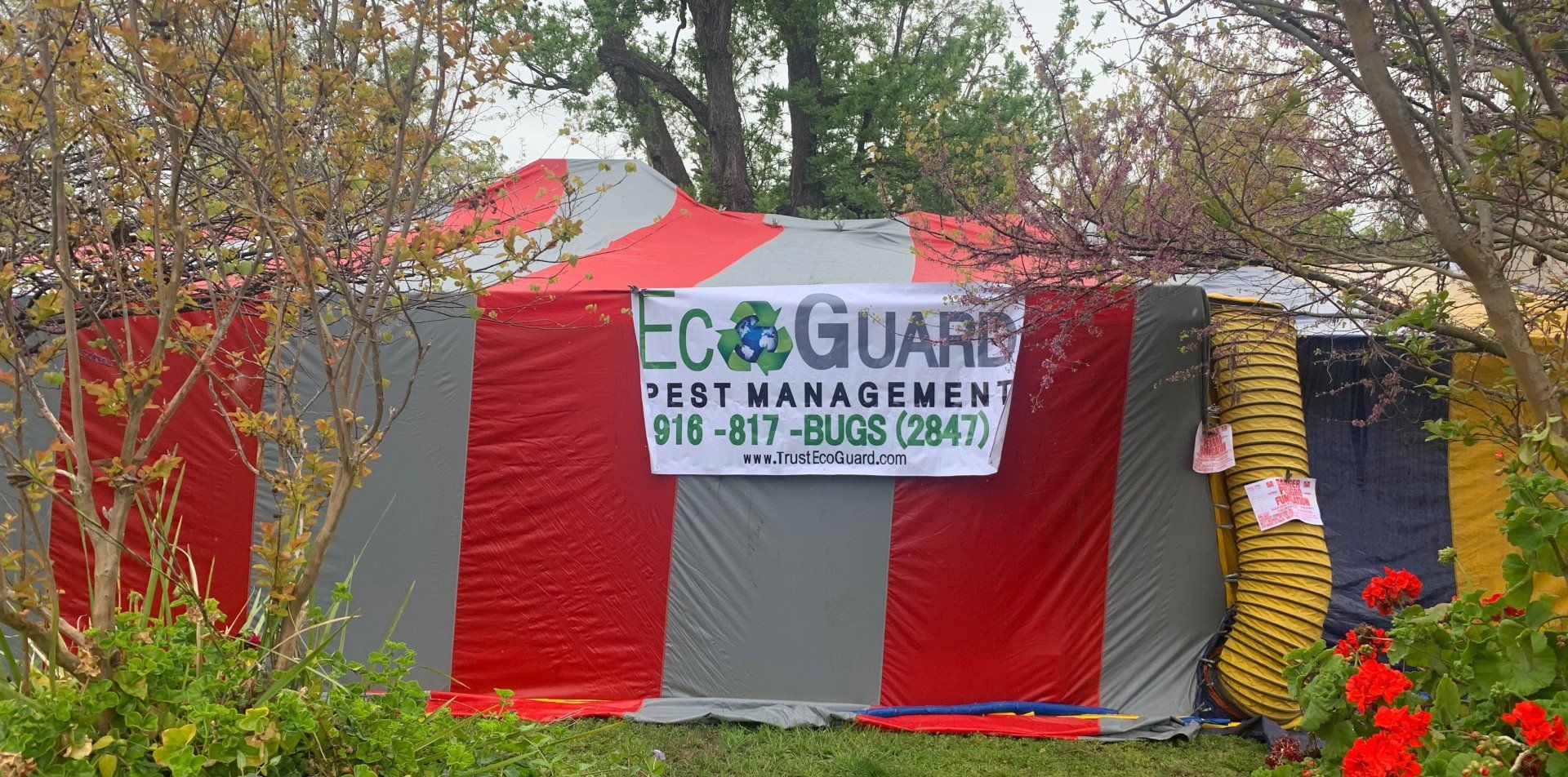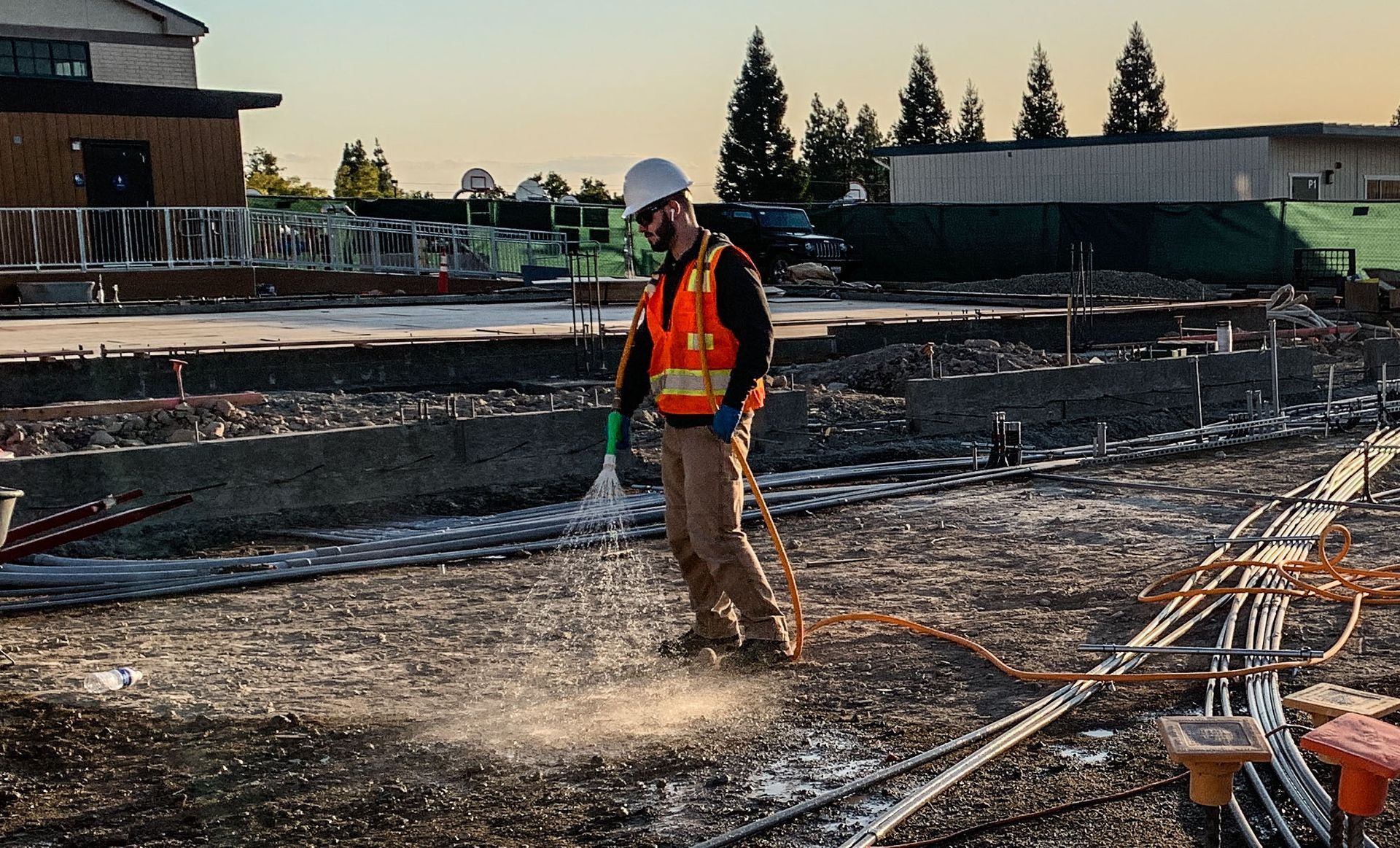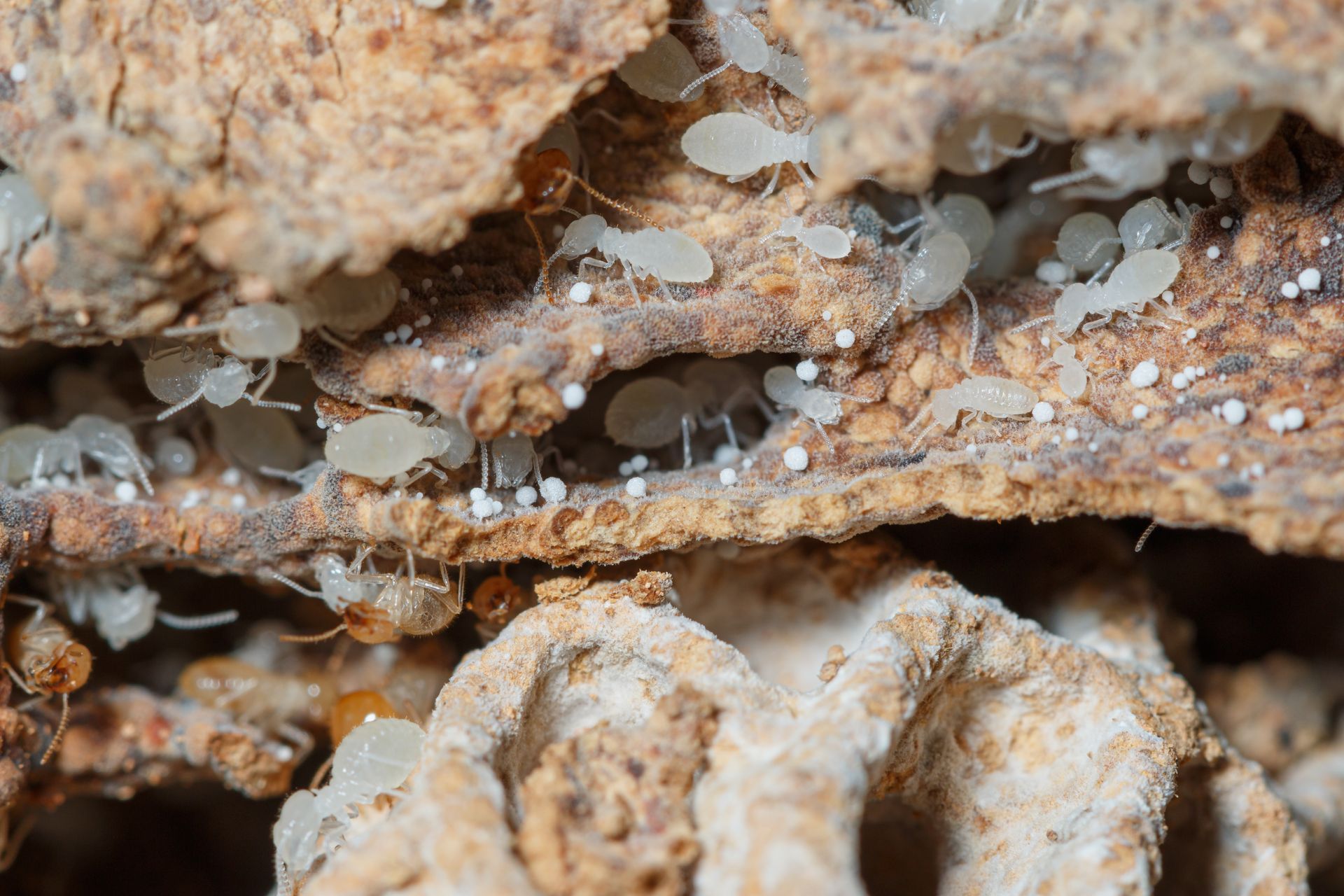Subterranean Termite Treatment and Pest Control Services
Finding tiny wings discarded near windowsills, discovering hollow sounding wood beams, or noticing pencil thin mud tunnels along your foundation are all alarm signals that subterranean termites have targeted your home. These destructive insects silently consume structural wood from the inside out, often causing thousands in damage before homeowners detect their presence. EcoGuard Pest Management provides comprehensive termite treatment strategies that use scientifically proven methodologies to both eliminate existing colonies and establish robust barriers against future invasions to protect your most valuable investment from these relentless wood destroyers.
Call today to a free estimate. 866-326-2847
Pest FREE Guarantee
All Natural Services
Licensed & Insured
Competitive Pricing
Professional Subterranean Termite Control Experts
According to the USDA, subterranean termites are responsible for between $1-$7 billion dollars in damage across the US every year [1]. This level of damage can put homeowners in a tight spot which is why professional treatment is so critical. Our technicians receive specialized training in subterranean termite biology, including Formosan subterranean termites and other invasive species. This expertise allows them to identify termite entry points, locate colonies, and determine the full extent of infestations that would remain hidden to untrained eyes. We implement customized treatment strategies based on your property's specific situation, construction type, and the nature of the infestation for more effective results than generic approaches.
Why Subterranean Termites Are a Serious Problem
Subterranean termites create unique challenges that demand immediate professional attention due to their destructive capabilities and elusive nature:
- A mature colony with hundreds of thousands of workers can consume several pounds of wood per year which can result in progressive structural weakening that often goes unnoticed until significant damage occurs.
- Subterranean termites build extensive underground networks that can extend hundreds of feet from the main colony which means that most homeowners remain unaware of infestations until serious damage has already occurred.
- A single established termite colony may contain millions of members [2], with the queen capable of producing thousands of eggs daily and living up to 30 years. Formosan subterranean termites are particularly aggressive, with colonies up to 10 times larger than native species, causing faster and more extensive damage.
- Unlike many pests that leave obvious signs, subterranean termites deliberately avoid exposure to light and air which conceals their activity within walls, foundations, and structural elements where damage progresses unseen until structural integrity is compromised.
How to Get Rid of Subterranean Termites
Our comprehensive approach to subterranean termite control combines multiple strategies tailored to your specific infestation:
- Liquid Termiticide Barriers: We create continuous chemical barriers around your home's foundation using non repellent termiticides like fipronil or imidacloprid that termites cannot detect which results in termites moving through treated soil before returning to the colony to expose the rest of the workers and the queen to the termiticide.
- Termite Baiting Systems: Strategic installation of below ground monitoring stations around your property's perimeter that contain wood attractants which are replaced with growth regulating bait once termite activity is detected to eliminate the entire colony over time.
- Targeted Foam Applications: Specialized expanding foam treatments injected into wall voids, galleries, and hard to reach areas where liquid applications cannot penetrate to ensure complete coverage in critical locations.
- Borate Wood Treatments: Direct application of borate based products to exposed wood surfaces that penetrate the fibers and provide long lasting protection against termite feeding while remaining safe for household members.
- Trenching and Rodding: Meticulous application of termiticides through trenching around foundations combined with sub slab injection through drilled access points to establish complete protective barriers where termites are most likely to enter.
- Direct Nest Treatment: When accessible, we directly treat termite nests and primary galleries with targeted applications designed to eliminate the reproductive center of the colony, including the queen and developing young.
What Attracts Subterranean Termites
Understanding what draws subterranean termites to your property is essential for effective control and prevention as these attractants can be eliminated to reduce the likelihood of subterranean termite activity:
- Moisture Conditions: Subterranean termites require consistent moisture to survive and will be attracted to properties with poor drainage, leaky pipes, improper ventilation, or excessive irrigation that creates damp soil conditions around foundations.
- Wood to Soil Contact: Structural elements like deck posts, stairs, or siding that directly contact soil create highway access for termites to move directly from their soil nests into your home without exposure to light or air.
- Cellulose Sources: Piles of firewood, lumber, cardboard, or other cellulose materials stored against the home or directly on soil provide both food and shelter that attracts foraging termites to your property.
- Optimal Soil Conditions: Loose, sandy soils with consistent moisture content are ideal for termite tunneling and colony development, with termites particularly active in warm soil temperatures between 75-95°F
How to Prevent Subterranean Termites
Protecting your property from subterranean termite invasion requires proactive measures that create inhospitable conditions for these destructive pests:
- Remove and Eliminate Termite Attractants: Keep all wooden elements at least 6 inches above soil level, address moisture issues by repairing leaks and improving drainage, and remove cellulose sources like tree stumps, woodpiles, and excessive mulch from around your foundation to eliminate both food sources and the moist conditions termites require to survive.
- Create Termite Barriers: Implement physical barriers during construction or renovation using stainless steel mesh, sand barriers, or treated building materials to impede termite movement into the structure, particularly at foundation penetration points.
- Schedule Professional Inspections: Arrange annual termite inspections by licensed professionals who can identify early warning signs and vulnerable areas before infestations develop, as experts can detect subtle evidence that homeowners typically miss.
- Consider Preventive Treatments: Invest in professional pre-treatment services that establish chemical barriers or monitoring systems around your property to provide ongoing protection that significantly reduces infestation risk compared to reactive treatments after damage occurs.
Signs of Subterranean Termite Infestation
Learn to recognize these distinctive indicators of termite activity:
- Mud tubes: Shelter tubes are about the width of a pencil running along foundation walls, support piers, floor joists, or other structural elements
- Hollow sounding wood: Damaged wood with a honeycomb interior that appears intact from the outside but has been hollowed along the grain
- Discarded wings: Shed wings accumulate near windows, doors, or light fixtures following swarms of reproductive termites
- Tiny holes: Exit holes in drywall or wallpaper with surrounding dark spots or blistering
- Frass: Termite droppings that appears as tiny pellets or a powder like substance pushed out of galleries
- Sagging floors: Buckling wood, or doors and windows that suddenly become difficult to open, indicating structural damage
DIY vs Professional Treatment
While hardware stores offer various termite control products, DIY approaches rarely provide effective protection against subterranean termites. Consumer grade termite treatments lack the concentration and specialized formulations professionals use, and without proper application equipment, these products cannot establish the continuous barriers needed for reliable protection. Additionally, most homeowners lack the training to identify the full extent of infestations or properly apply treatments to hidden termite entry points.
Professional termite control offers comprehensive protection that DIY methods cannot match. Our licensed technicians have the expertise to conduct thorough inspections that identify all termite activity, including hidden colonies and damage. We utilize commercial grade termiticides and specialized equipment to create complete barriers and targeted treatments that reach areas inaccessible to consumer products. Our integrated approach also combines multiple treatment methods tailored to your property's specific construction and the nature of the infestation to provide both immediate elimination and long term prevention with documented warranty protection that DIY methods simply cannot deliver.
Commercial Subterranean Termite Control
EcoGuard Pest Management delivers specialized subterranean termite control programs for businesses, designed to protect valuable assets while ensuring regulatory compliance and operational continuity. Our commercial services address the unique challenges termites present in different business environments through customized treatment protocols.
We provide expert termite control solutions for:
- Hotels and hospitality venues
- Multi-unit residential properties
- Healthcare institutions
- Office complexes
- Retail establishments
- Educational facilities
- Restaurant and food service operations
- Warehouses and storage facilities
- Manufacturing facilities
- Historical buildings and structures
For immediate service for all of your termite control concerns please call 866-326-2847 or complete this form.
EcoGuard Guarantee
We understand the persistent threat subterranean termites pose to your property and back our termite control services with a comprehensive warranty. If termites return to treated areas during your termite warranty period, our technicians will promptly return to reassess and retreat at no additional cost. Our commitment extends beyond initial control to ensure lasting protection through regular inspections of barriers and monitoring systems, annual assessments of your property's termite risk factors, documentation of all treatments and findings for warranty purposes, and rapid response to any new termite activity that might threaten your home.
Termite Pest Control Process
Inspection - Our technicians conduct a comprehensive property assessment using specialized tools like moisture meters, localized inspection, and termite detection devices to locate active termites and identify all potential entry points. We examine both interior and exterior areas while paying special attention to foundations, crawl spaces, basements, and other vulnerable areas where termites frequently enter structures.
Treatment - Based on inspection findings, we develop and implement a targeted control strategy combining liquid termiticide applications, baiting systems, and focused treatments suited to your specific situation. Our approach addresses both active infestations and creates preventive barriers to protect against future termite invasions.
Exclusion - We identify and address structural vulnerabilities that provide termite access to your home. This includes recommendations for moisture control, elimination of wood to soil contact, and other modifications to make your property less attractive to termites.
Ongoing Monitoring - Our protection plan includes inspections of termite monitoring stations, assessment of barrier integrity, and evaluation of environmental conditions that might attract new termite activity. This continuous vigilance ensures early detection of any new termite threats before damage can occur.
Seasonal Plan for Subterranean Termite Control
Spring - Critical monitoring period as warming soil temperatures increase termite activity and trigger reproductive swarms. We focus on thorough property inspections to identify any winter damage or new entry points, refreshing termite barriers as needed and ensuring bait systems are ready for the season of peak termite movement.
Summer - Intensive treatment period when soil conditions are optimal for liquid termiticide application and termite foraging reaches maximum levels. Summertime inspections focus on areas with irrigation or moisture issues that create attractive conditions for termites seeking relief from hot, dry soil conditions.
Fall - Fall treatments focus on reinforcing barriers before ground freezes and addressing any conducive conditions like leaf accumulation or drainage issues that could attract termites seeking stable moisture conditions.
Winter - Maintenance period for monitoring indoor termite activity, as subterranean termites remain active year round in heated structures. Winter services include interior inspections of basements, crawl spaces, and utility areas where termites may continue feeding despite colder outdoor temperatures.
Subterranean Termite Control FAQs
How can I tell if I have subterranean termites versus other wood destroying insects?
Subterranean termites create distinctive mud tubes to travel between soil and wood, and their damage follows the wood grain, leaving a honeycomb appearance with soil or mud packed into galleries. Unlike carpenter ants that push out clean wood shavings, termites consume the wood and leave behind frass (fecal pellets). Termites vs ant appearance varies as well with ants having pinched waists and jointed antennae while termites have thick abdomens and straight antennae.
What makes subterranean termites more destructive than other termite species?
Subterranean termites live in massive colonies with populations reaching millions of individuals, vastly outnumbering other termite species. Their underground nesting allows colonies to grow larger and forage more extensively than drywood termites. Additionally, their hidden nature means damage often progresses undetected for years before discovery, with Formosan subterranean termites being particularly aggressive as they consume wood at a significantly faster rate than native species.
How do termites get into a house with a concrete foundation?
Termites build mud tubes over foundation walls to reach wooden structures where they can enter through cracks as thin as 1/32 of an inch. In homes with slab foundations, termites can enter through openings around plumbing fixtures, electrical conduits, and through gaps between the slab and wall framing, often traveling significant distances through soil beneath the concrete.
How long does it take subterranean termites to cause serious damage?
Damage timeline varies based on colony size, species, and environmental conditions. A mature colony of 60,000 workers might consume about 5 grams of wood daily, potentially damaging a foot of 2x4 lumber in 5-6 months. However, Formosan subterranean termite colonies can be 10 times larger and cause significant structural damage within 6 months to 2 years if left untreated. The hidden nature of termite damage means most infestations are discovered only after years of progressive destruction.
How effective are liquid termiticide barriers for subterranean termite control?
Modern non repellent liquid termiticides create highly effective barriers that termites cannot detect, allowing them to tunnel through treated soil and transfer the active ingredient throughout the colony. When properly applied by professionals, these barrier treatments can provide protection for 5-10 years, with some products offering effectiveness for up to 15 years. The key to success is establishing a complete, uninterrupted barrier around the entire foundation with proper concentration and application techniques.
What is the difference between termite baits and liquid soil treatments?
Liquid soil treatments create chemical barriers that either repel or kill termites attempting to enter structures, providing immediate protection. Baiting systems work more gradually by placing stations around the property that attract foraging termites, which then carry slow acting toxicants back to the colony, eventually eliminating the entire population including the queen. Liquid treatments focus on structure protection, while baiting systems target colony elimination, with many professional termite programs combining both approaches for comprehensive control.
Are subterranean termite treatments safe for my family and pets?
Modern termite control products are designed with safety in mind when properly applied by licensed professionals. Today's termiticides have targeted activity against termite nervous systems with minimal impact on mammals. Bait systems contain small amounts of active ingredients in secured stations, while liquid applications are placed in soil or within structural voids where contact with people and pets is minimized. We provide detailed safety information and temporary access restrictions following any treatment.
How long does professional termite treatment typically last?
The durability of termite treatments varies by method. Liquid termiticides are typically rated for 5-10 years with some variability due to external factors. Borate wood treatments remain effective for the life of the wood as long as it's not exposed to excessive moisture. Monitoring and baiting systems require ongoing maintenance but provide continuous protection as long as they're properly serviced. Most professional companies offer renewable warranty programs to ensure long term protection.
What preparation is required before a professional termite treatment?
Preparation requirements vary based on treatment method. For chemical barrier treatments, you'll need to provide access to your foundation perimeter, move plants and mulch away from immediate foundation areas, and ensure technicians can access crawl spaces and basements. Interior preparations may include moving stored items away from walls in basements, clearing areas where drilling might be needed, and temporarily disconnecting water recycling systems. We provide a detailed preparation checklist tailored to your specific treatment plan.
How do you treat termites in hard to reach areas like foundations and wall voids?
We use specialized equipment and techniques including drill and inject applications through concrete slabs and foundations, creating small, strategic holes that allow termiticide delivery directly to the soil beneath. For wall voids, we utilize foam formulations that expand to fill spaces where liquid applications can't reach. In crawl spaces and other hard to access areas, we may use trenching combined with specialized application tools to ensure complete coverage of critical treatment zones.
Can termites return after professional treatment?
While professional treatments are highly effective, properties can face new termite pressure, particularly in high risk regions. Liquid barriers may eventually break down, soil can shift creating gaps in protection, or new colonies may establish in untreated areas. This is why we recommend ongoing monitoring systems and renewable warranty programs that include regular inspections to identify and address new termite activity before damage occurs.
What makes Formosan subterranean termites more dangerous than native species?
Formosan subterranean termites create significantly larger colonies (often exceeding 1 million individuals compared to 200,000 for native species), consume wood at a faster rate, and build more extensive foraging tunnels covering larger territories. They're more aggressive in seeking entry points and can establish aerial nests within structures, allowing them to thrive without soil contact. Their ability to build carton nests that retain moisture enables them to survive in drier environments than native species, expanding their potential damage range.
How do termite baiting systems work and how effective are they?
When termites discover bait stations, they consume an insect growth regulator or metabolism inhibitor that workers carry back to the colony. These slow acting toxicants prevent termites from molting or digesting food, eventually eliminating the entire colony including the queen. When properly maintained, baiting systems are highly effective, though they work more gradually than liquid treatments.
What is the difference between repellent and non-repellent termiticides?
Repellent termiticides (typically pyrethroids) create barriers that termites detect and avoid, preventing entry but not eliminating colonies. Non-repellent termiticides (like fipronil, imidacloprid, and chlorantraniliprole) are undetectable to termites and allow them to travel through treated soil and transfer the active ingredient to nestmates through contact and grooming. Non-repellents are generally preferred for existing infestations because they exploit termites' social behavior to spread the treatment throughout the colony rather than simply redirecting their entry attempts.
Does homeowners’ insurance cover termite damage?
Most standard homeowners’ insurance policies specifically exclude damage caused by termites and other wood destroying organisms, considering this preventable through proper maintenance. This exclusion makes professional termite protection particularly important, as repair costs for structural damage can reach tens of thousands of dollars.
How do professionals determine the extent of a termite infestation?
Professional termite inspections utilize multiple assessment methods including visual inspection of all accessible areas, moisture meters to detect elevated wood moisture that may indicate termite activity, infrared cameras to identify temperature variations in walls that suggest infestation, acoustic detection devices that can hear termite feeding activity within structures, and in some cases, trained termite detection dogs that can smell the pheromones produced by termite colonies.
What termite warning signs should homeowners watch for between professional inspections?
Be alert for mud tubes on foundation walls, piers, or floor joists, accumulations of discarded wings near windows after spring or fall swarms, new cracks in drywall or paint, floors that suddenly become squeaky or uneven, doors or windows that become difficult to open, hollow sounding wood when tapped, or any wood that appear damaged with a honeycomb interior. Early detection significantly reduces potential damage and treatment costs.
When can termite damage be repaired after treatment is completed?
Structural repairs should ideally be delayed until the termite infestation is fully controlled, which may take 30-90 days depending on the treatment method and infestation severity. Premature repairs may interfere with treatment effectiveness or conceal continuing termite activity. Once your termite professional confirms the infestation is controlled, damaged wood should be evaluated by a contractor to determine whether it requires complete replacement or can be reinforced depending on the extent of damage.
What makes a property more vulnerable to subterranean termite infestation?
Risk factors include excess moisture around foundations from poor drainage or improper gutter systems, wood elements in direct contact with soil, including fence posts, deck supports, or siding, cracks in concrete slabs or foundations, heavy mulch or dense vegetation against the structure, previous termite history in the neighborhood, and certain construction types like slab on grade foundations that provide easier termite access. Properties in warmer southern regions also face higher natural termite pressure due to favorable climate conditions.
How do professionals treat homes with wells or near water sources?
For properties with wells, ponds, or near bodies of water, we utilize specialized termiticides approved for use in sensitive areas and maintain proper buffer zones to prevent contamination. Treatment plans may be modified to use physical barriers, baiting systems, or targeted applications in areas where liquid applications would be inappropriate. Our technicians are trained in proper application techniques that protect water sources while still providing effective termite control around the entire structure.
Additional Termite Resources
Additional Pest Commonly Treated
See our Pest Library for a full list of insects we treat for. If you don’t see what you are looking for give us a call. We are always here to help! EcoGuard Pest Management provides eco-friendly services for both residential and commercial properties.
Why Choose EcoGuard?
- A pest free guarantee
- Green & ecofriendly pesticides that are state approved
- Licensed, bonded, and insured services
- Competitive pricing



